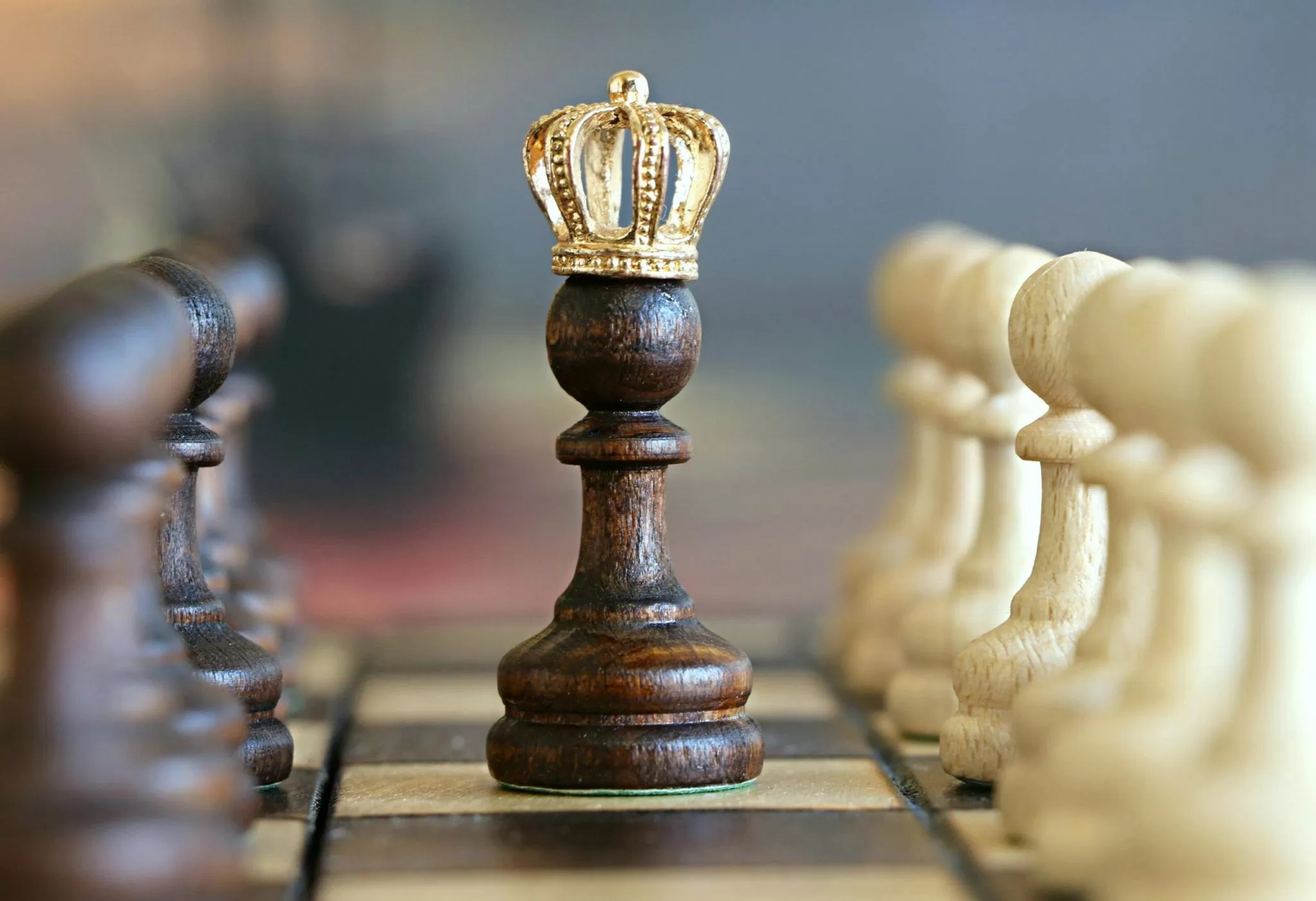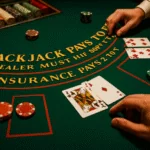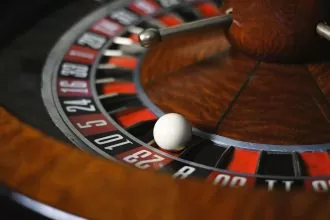Quiet yet strategic, ancient yet resolutely modern, the game of chess is currently experiencing a spectacular resurgence. What was once considered an intellectual pastime reserved for an elite has become a major cultural phenomenon, attracting a new generation of passionate players.
Between “The Queen’s Gambit” on Netflix, the explosion of online tournaments, and the social media craze, the 64 black and white squares have never been more fashionable. But what are the real reasons for this comeback?
How does a game over 1,500 years old manage to capture attention in our digital age dominated by screens and instantaneous play? And above all, how can you take advantage of this wave to develop your own skills and join this growing community?
Let’s dive into the driving forces behind this fascinating renaissance and discover the techniques that will allow you to progress quickly on the chessboard. The cultural phenomenon behind the comeback of chess
The “Queen’s Gambit” effect: when Netflix reawakens passion
The global success of the miniseries “The Queen’s Gambit” in 2020 was the catalyst for renewed interest in chess. This Netflix production, following the journey of a young chess prodigy in the 1960s, broke all viewing records with over 62 million households reached in its first month of release. The consequences were immediate: chessboard sales increased by 125% according to eBay, while registrations on online chess platforms like chess.com saw a staggering 400% increase.
This cultural phenomenon has democratized the image of chess, transforming it from a game perceived as elitist to a cool and accessible activity. The portrayal of a female heroine has also contributed to feminizing this traditionally male-dominated environment, with a 15% increase in the number of female players registered in clubs.
Image of a scene inspired by the series “The Queen’s Gambit” with a chessboard in the foreground.

The rise of chess is also driven by a new generation of influencers and streamers. Grandmasters like Hikaru Nakamura and Alexandra Botez have millions of subscribers on Twitch and YouTube, offering accessible and entertaining content that demystifies this complex game.
Tournaments broadcast live with real-time commentary transform this activity into a true sporting spectacle. PogChamps, a tournament featuring internet celebrities, attracted over 150,000 concurrent viewers in 2021, demonstrating the general public’s appeal when presented in an engaging manner.
The competitive dimension that appeals to the esports generation
The competitive aspect of chess particularly resonates with the generation accustomed to video games and esports. With its precise Elo ratings, instant matchmaking, and rapid game formats (blitz, bullet), online chess offers an experience similar to the most popular competitive games.
Top gaming platforms like chess.com and lichess.org have optimized their interfaces to make the experience addictive, with reward systems, daily puzzles, and instant analysis that encourage continuous progress.
The cognitive and social benefits of chess: why play it?
The scientifically proven impact on brain development
Neuroscience research confirms that regular chess practice significantly boosts cognitive development. A study from the University of Memphis demonstrated a 17% improvement in concentration skills among regular players, while researchers at Pennsylvania State University established a correlation between chess practice and increased IQ, particularly in children.
Playing chess simultaneously activates both hemispheres of the brain, promoting:
Spatial memory (hippocampus)
- Strategic planning (prefrontal cortex)
- Decision-making under pressure (amygdala)
- Pattern recognition (visual cortex)
- These repeated stimulations create new neural connections, strengthening brain plasticity even in older adults.
An internationally recognized educational tool
Many educational systems around the world now integrate chess into their curriculum. Armenia made chess mandatory starting in elementary school, while Spain launched the “Ajedrez en la Escuela” (Chess in School) program with impressive results:
33% improvement in mathematics performance
- Increased development of problem-solving skills
- Strengthened attention and concentration in the classroom
- UNESCO has recommended the integration of chess into school curricula since 2019, recognizing its unique educational potential.
The often underestimated social dimension
Contrary to popular belief, chess is a highly social activity that fosters connections between individuals from all walks of life. Chess clubs, tournaments, and online communities create intergenerational and intercultural bonds around a universal language.
A survey conducted by the International Chess Federation (FIDE) reveals that 78% of regular players consider the social aspect to be an important motivation for their practice. Fundamental Techniques for Rapid Progress in Chess
Opening Principles for Beginners and Intermediate Players

To get off to a solid start, master these fundamental principles that have been proven for centuries:
Control the center
– The e4, d4, e5, and d5 squares are strategic for dominating the board
- Develop your pieces – Move your knights and bishops quickly to activate your play
- Castle early – Secure your king, ideally before the 10th move
- Connect your rooks – They work best together on an open file
- Limit pawn moves – Every advance creates potential weaknesses
- For intermediate players, these versatile openings offer an excellent balance of simplicity and effectiveness: With White
: The London System, the Colle System, or the Spanish
- With Black : The Sicilian Defense, the French Defense, or the Slav Defense
- Essential tactics for winning games Tactical combinations are often decisive, even at the highest level. Practice these patterns daily:
Tactics
Description
| Potential Gain | Fork | One piece attacks two targets simultaneously |
|---|---|---|
| Immediate Material Gain | Pin | A piece cannot move without exposing a more valuable piece |
| Mobility Restriction | Enfilade | Attack on a line of two or more pieces |
| Delayed Material Gain | Uncovered Attack | Movement of one piece revealing the attack of another |
| Tactical Surprise | Sacrifice | Voluntary surrender of material for a superior advantage |
| Decisive Initiative | Studying tactical puzzles daily for 20-30 minutes drastically improves your visualization and calculation skills. | Middlegame Strategies to Dominate the Position |
The middlegame is often the decisive moment when an advantage is built. Focus on:
Analyzing pawn structures
– Identify isolated, doubled, or backward pawns that create lasting weaknesses
- Optimal piece placement – A well-positioned knight in the forefront can be stronger than a poorly positioned rook
- Bishop pairs – Keep both bishops in open positions to maximize their potential
- Open files – Control them with your rooks to penetrate the opponent’s side
- Pawn majorities – Create a surplus of pawns on one wing to generate a passed pawn
- Endgame techniques to solidify your advantage Knowledge of endgames turns drawn games into victories. Master these fundamental endgames:

King and queen versus king
– Mate in 10 moves or less
- King and rook versus king – Use the “king’s ruff” method
- King and pawn versus king – Understand the opposition and square rules
- The triangle rule – To gain crucial tempo
- The Lucena Position – To convert a rook and pawn advantage
- The Philidor Position – To defend a difficult rook endgame
- A systematic study of Dvoretsky, Silman, or Pandolfini’s endgames will significantly improve your results. Technological tools that are revolutionizing chess learning
Training platforms and mobile apps
Chess learning has been transformed by technology. The most effective resources include:
Chess.com
– Over 100 million users, with interactive lessons and AI analysis
- Lichess.org – Free open-source platform with advanced analysis tools
- Chessable – Spaced repetition learning system for memorizing openings
- Chess24 – Training videos by international grandmasters
- Tactics Frenzy – Mobile app specializing in intensive tactics training
- These platforms offer personalized learning paths that adapt to your level and progress. Artificial Intelligence at the Service of the Chess Player
AI has revolutionized the way we learn and analyze chess:
Analysis Engines
– Stockfish, Leela Chess Zero, and Komodo offer precise evaluations of each position
- Game Assistant – Applications like Chess Vision or Chess Scanner instantly convert a physical position into a digital diagram
- Post-Mortem Analysis – Automatically identify your typical mistakes and trends using AI
- Personalized Sparring – Face AI calibrated exactly to your level for optimal learning
- A judicious use of AI can accelerate your progress by 35%, according to a Stanford University study. How to Join the Chess Community
Find Your Local Club and Participate in Tournaments
Face-to-face experience remains irreplaceable for progress. To find your ideal environment:
Visit the French Chess Federation website to locate clubs near you.
Start with rapid or blitz tournaments to familiarize yourself with the competitive atmosphere.
- Don’t hesitate to participate in approved tournaments to obtain an official Elo rating.
- Join group lessons, often offered at a low price by clubs.
- A minimal initial investment (€30-50 for an annual club membership) gives you access to an entire community of enthusiasts and potential mentors.
- Online communities: forums, Discord, and social networks.
To enrich your experience and continuously learn:
Join specialized Discord servers like “Chess.com Official,” “Lichess,” or “Échecs Passion”
Follow Reddit communities like r/chess (1.5 million members) for in-depth discussions.
- Participate in weekly online tournaments tailored to your level.
- Exchange your analyses on specialized forums like ChessTalk or chess-online.fr
- These community spaces allow you to share your games, receive personalized advice, and follow chess news.
- Common Mistakes to Avoid
Strategic Pitfalls for Beginners and Intermediates
Avoid these mistakes that slow the progress of many players:
Neglecting Development
– Don’t try to attack prematurely without having developed your pieces
- Moving the same piece multiple times – Each move should ideally serve a new objective
- Ignoring Opponent’s Threats – Always ask yourself “what is my opponent threatening?” before playing
- Exchanging Without Reason – Each exchange must have a clear strategic objective
- Playing Too Fast – Take the time to develop a coherent plan
- A typical mistake observed among 73% of beginner players is the tendency to take out the queen too early, thus exposing it to opponent’s attacks. Counterproductive Study Habits To optimize your learning, avoid these ineffective approaches:
Too many openings
– Focus on 2-3 solid systems rather than dispersing your attention
Overuse of rapid games
- – Playing exclusively blitz limits your strategic understanding Superficial analysis
- – Examining only tactical errors without understanding positional causes Blind imitation
- – Copying grandmaster moves without understanding their logic Lack of a system
- – Studying in a disorganized manner without a structured learning plan A balanced approach combining theory (30%), practice (50%), and analysis (20%) offers the best results.
- Equipment and accessories to enhance your experience Choose the right chessboard according to your level and goals
Your equipment can significantly influence your enjoyment of the game and your progress:
Type of chessboard
Benefits
Average price
| Ideal for | Vinyl/PVC chessboard | Portable, affordable | €15-25 |
|---|---|---|---|
| Beginners, Clubs | Standard Wood | Aesthetic, Durable | €50-150 |
| Regular Players | Electronic Chessboard | Records Moves, Connected | €250-500 |
| In-Depth Analysis | Competition Board | FIDE Regulations | €80-200 |
| Official Tournaments | Collectible Chessboard | Unique Design, Handcrafted | €200+ |
| Collectors | For beginners, a standard chessboard with 3.75″ (95mm) Staunton pieces offers the best compromise between ergonomics and price. | Essential Apps and Tech Accessories | Complete your equipment with these tools that enhance the modern chess experience: |
Chess Clocks
– DGT 3000 or ChronosGX for precise timing
Electronic Notation
- – Systems like MonRoi or PlyCount to record your games Digital Library
- – Forward Chess or ChessBase to access thousands of books Analysis boards
- – Magnetic models for studying on the go Analysis software
- – ChessBase or SCID vs. PC to build your personal database A gradual investment in these tools, based on your level and needs, will optimize your progress.
- FAQ: Answers to frequently asked questions about the chess revival Is chess really accessible to adult beginners?
Absolutely. Contrary to popular belief, starting chess as an adult has certain advantages. Adults assimilate strategic logic more quickly and benefit from developed analytical skills. According to a FIDE study, an adult beginner can reach an intermediate level (1200-1400 Elo) in 6 to 12 months with regular practice of 3-4 hours per week. The important thing is to adopt a structured and progressive learning method, starting with the basics (piece movements, fundamental principles) before tackling more complex concepts.
How long does it take to become a good chess player?
Chess progression generally follows this curve:
Beginner level
(800-1000 Elo): 3-6 months of regular practice
Intermediate level
(1200-1600 Elo): 1-2 years of study and practice
- Advanced level (1800-2000 Elo): 3-5 years of serious study
- Expert/Master level (2200+ Elo): 5-10+ years of intensive practice
- The “10,000-hour rule” applies to achieving excellence, but you can have a lot of fun and beat the majority of casual players after a few months of structured learning. Is online chess comparable to playing on a physical chessboard?
- The two experiences complement each other. Online chess offers unique advantages: Ability to play at any time against opponents of equal skill
Instant game analysis
Access to thousands of puzzles and lessons
Measurable progress with detailed statistics
- However, the physical experience remains irreplaceable for:
- The psychological dimension of face-to-face play
- Learning tournament etiquette and norms
- Different depths of concentration
The richness of social interactions
- Today’s best players combine both approaches for optimal progress.
- How to manage the frustration of repeated defeats?
- Frustration is an integral part of the chess journey. To turn it into a driver of progress:
- Analyze objectively
– Identify your mistakes without emotional judgment
Set process goals
– Value the quality of your decisions rather than the outcome
- Celebrate small victories – A good combination, even in defeat, is a success
- Keep a progress journal – Record your learnings after each game
- Vary your opponents – Alternate between stronger players (to learn) and those of a similar level
- A 2019 psychological study showed that players who adopt this “growth mindset” progress 40% faster than those focused solely on results. Join the chess revolution
- The current chess renaissance represents much more than a passing fad. This age-old game continues to fascinate with its strategic depth, mathematical beauty, and ability to transcend cultural and generational barriers. The time has never been better to embark on this intellectual adventure. With democratized learning resources, welcoming communities, and innovative technological tools, chess is now accessible to everyone.
Whether you’re looking to boost your cognitive abilities, take on an intellectual challenge, or simply share quality time with other enthusiasts, chess has something to offer. So don’t wait any longer, join the millions of new fans rediscovering this fascinating game and begin your own journey across the 64 squares.
Ready to make your first move? Download our free guide “21 Days to Master Chess Fundamentals” and transform yourself from beginner to confident player in less than a month!



